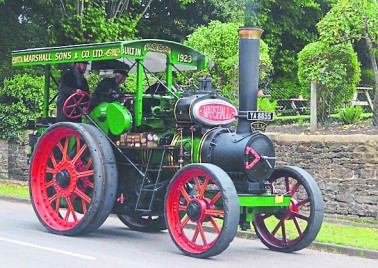TIMSONS Engineering was approached in January this year by a local owner of a traction engine which had suffered the failure of a differential gear. Richard McCormick, owner of the traction engine, visited Timsons’ Machine Shop in Water Street with the failed gear in a number of bits. He requested that the firm manufacture a faithful reproduction of the original that would work with the existing mating components. Richard McCormick gave a brief history of the traction engine: “Built as a convertible steam roller in 1923, Marshall compound “S-Type”, no.
TIMSONS Engineering was approached in January this year by a local owner of a traction engine which had suffered the failure of a differential gear. Richard McCormick, owner of the traction engine, visited Timsons’ Machine Shop in Water Street with the failed gear in a number of bits. He requested that the firm manufacture a faithful reproduction of the original that would work with the existing mating components. Richard McCormick gave a brief history of the traction engine: “Built as a convertible steam roller in 1923, Marshall compound “S-Type”, no. 76963 named JEM spent her working life rolling the roads for Weston-Super-Mare county council. She left the council in the 1950s and briefly passed to W.W. Buncombe as part of his fleet. In 1962 she entered preservation and has passed through seven owners. She was converted to a traction engine in 1968, before being purchased by the current owners in 1972 where she has remained ever since”. A quotation was supplied detailing the cost for a new pattern to produce the casting, the cost of the casting itself and also the machining. This was accepted and an order was received on 26 January. A delivery date of early April was requested to enable the new gear to be fitted in time for the steam rally season. The pattern was produced using the original gear without the aid of a drawing, which would be the normal process. After the pattern had been checked, the gear was cast in steel, grade A2, and finished to the required standard ready for machining. The first stage of the machining process involved turning on the CNC vertical lathe and then milling on one of the CNC vertical machining centres. The final stage was cutting the keyways. This allowed the gear to be secured to the shaft of the original keys. The gear then passed through the final inspection process before being released for dispatch. The new gear was gratefully received by Richard on 25 March and was back on the traction engine and working by Sunday 27 March with an inaugural run to the local pub the same day.


